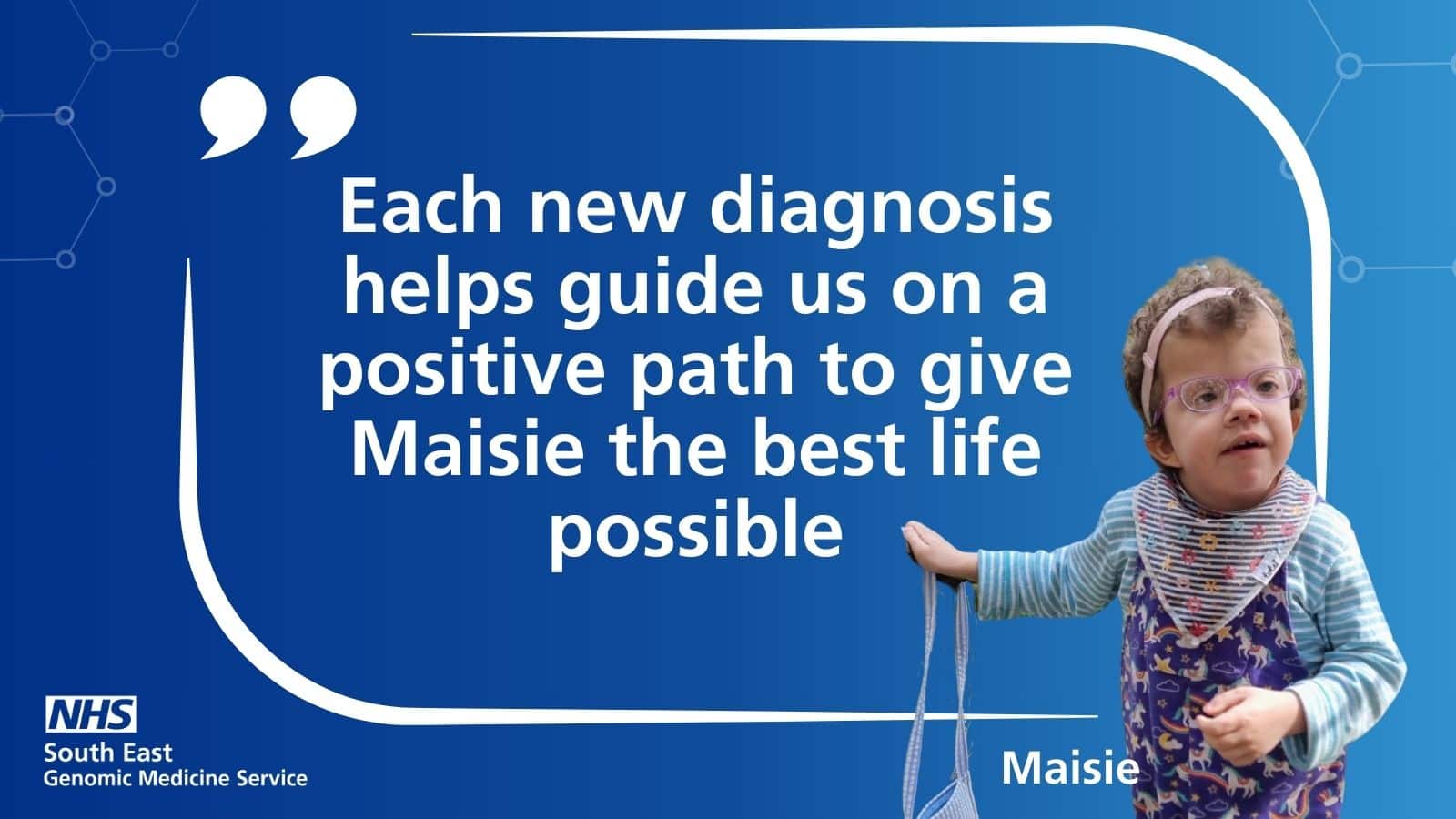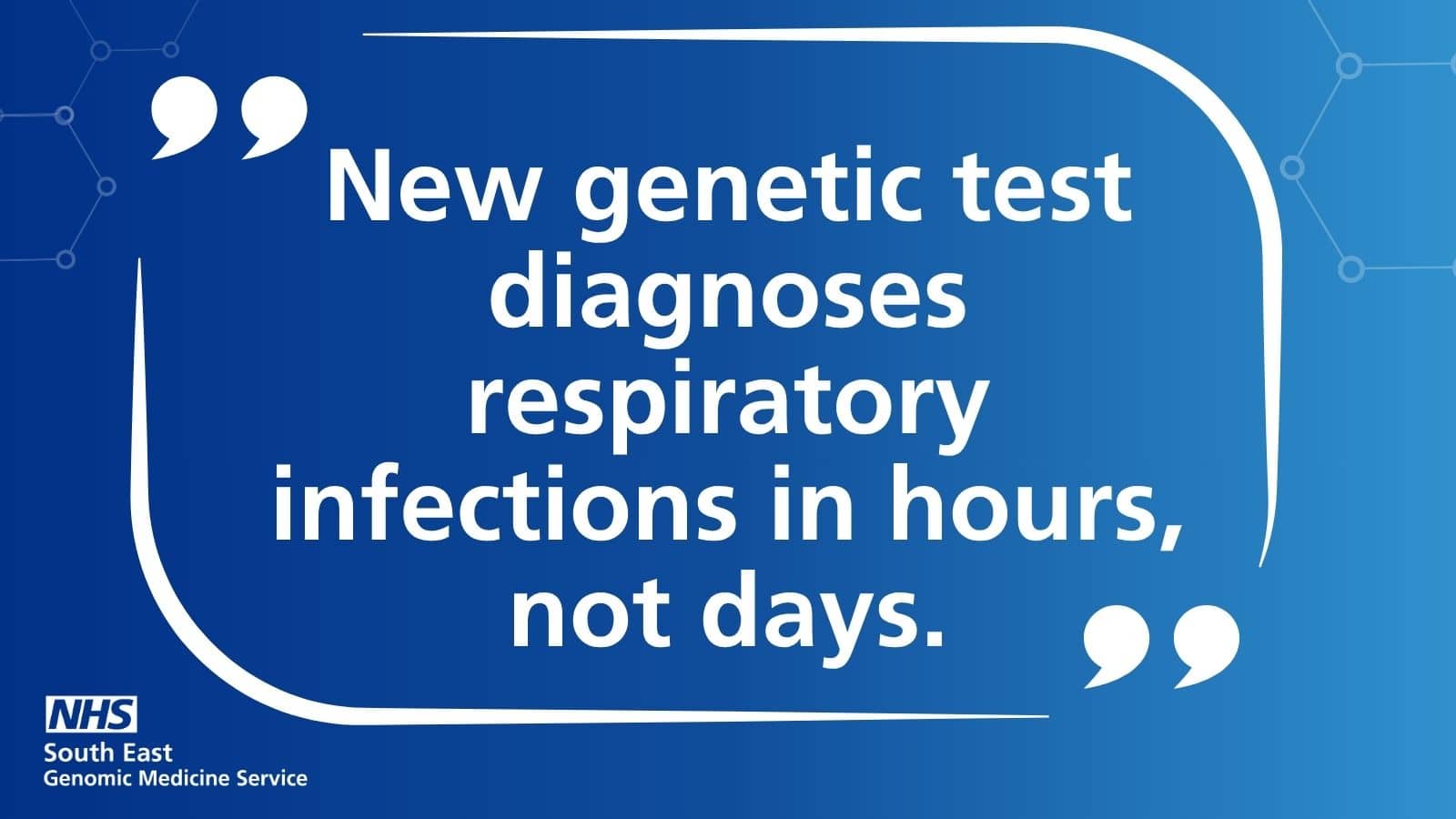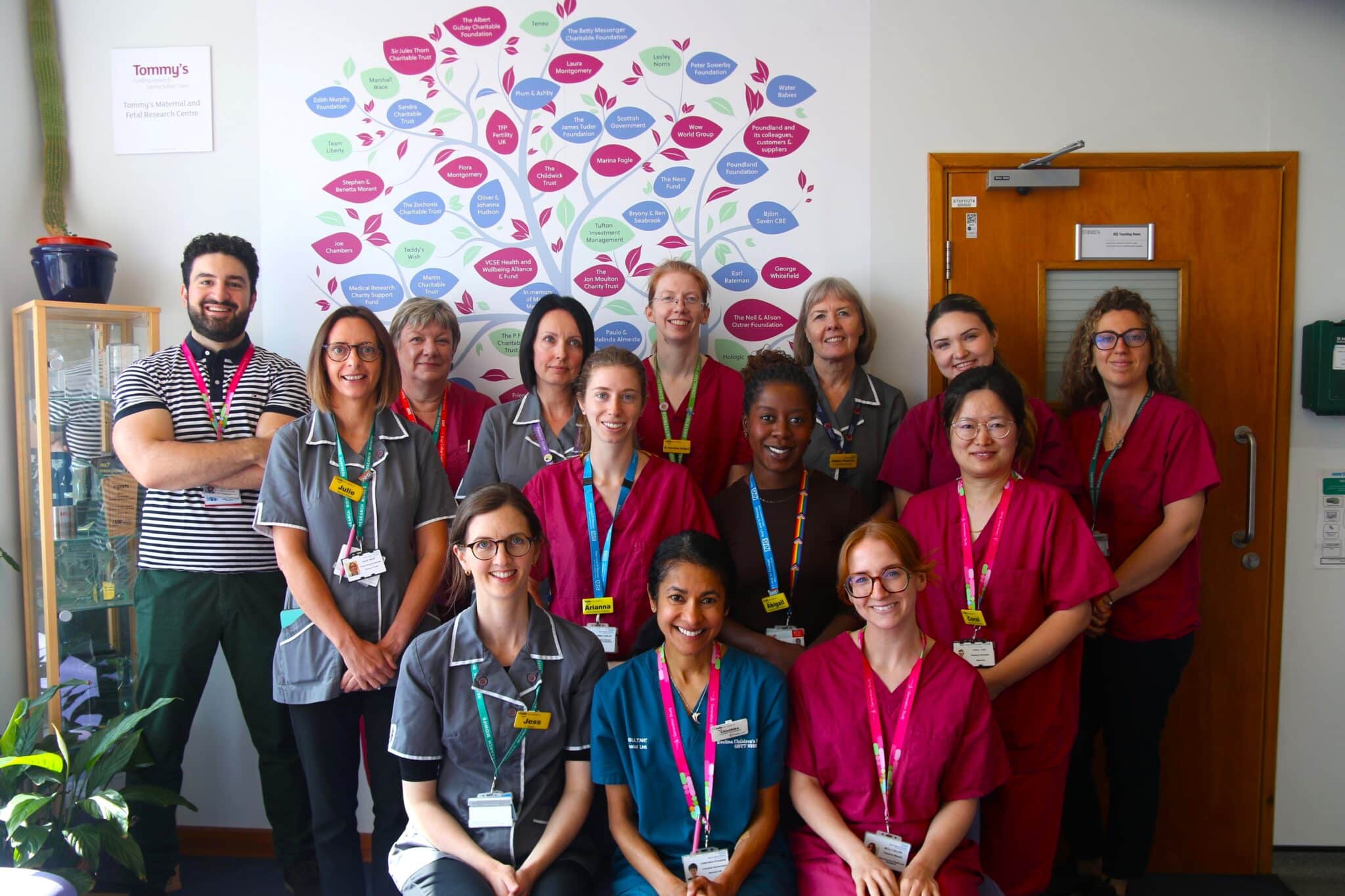Maisie’s diagnosis helped everything to make sense.

Charlotte knew that her daughter was going to face challenges after their very first pregnancy scan picked up some concerns.
Known as a nuchal translucency test, Charlotte’s ultrasound measured the thickness of the space behind a baby’s neck. It is a standard indicator for certain genetic conditions such as Down’s Syndrome, with a ‘normal’ measurement being less than 2.5mm thick. Charlotte’s scan measured 9mm.
“They couldn’t tell us what was wrong. The only certainty was that something was definitely not right.”
Further tests, including an amniocentesis, didn’t provide any clues, but scans continued to show enlarged kidneys (known as hydronephrosis), fluid filled cysts, a large tummy and a heart defect.
Maisie was born naturally at 37 weeks weighing 7lb 12oz, with a clearly visible ring around her neck. The following day they met with the Consultant Paediatrician who ordered genetic testing.
“The waiting was very difficult. I’d just given birth and we had so many questions, but none of the answers.”
In the first three days, Maisie lost 12% of her body weight. Most babies lose some weight as they adjust to life outside of the womb, but Doctors were increasingly concerned and wanted Maisie to be weighed every 2 days.
“I was so stressed. Every ounce Maisie lost felt like a personal failure, as if I was somehow to blame. I couldn’t get into a feeding routine in-between so many hospital appointments.”
Two months after being born, Charlotte and her partner Andy got the genetic results and Maisie was diagnosed with Cardiofaciocutaneous Syndrome, also known as CFC Syndrome in Maisie.
Maisie had a variant in her BRAF gene. The BRAF gene is a part of the body’s instructions for making proteins that help control how our cells grow and divide. It’s like a tiny switch that helps our cells know when to grow and when to stop growing. When it works normally, it helps control cell growth, but when it’s altered, it can lead to serious health problems.

There are currently only 1,000 registered people in the world with the same condition as Maisie.
“Going into that appointment was terrifying. We knew there was something wrong with Maisie, but we didn’t know the reality or what it would mean for our family.”
CFC is characterised by heart defects, facial abnormalities, skin and hair issues, feeding difficulties, intellectual disability, and growth and developmental delays. For Maisie it was causing her gastro-intestinal problems which was instigating the weight loss.
“Although scary, Maisie’s diagnosis allowed us to move forwards. Our consultant immediately arranged appointments for the multidisciplinary team of people we’d need to meet including heart doctor, specialist dietician, local consultant paediatrician and occupational therapist. The list was long and based on the CFC Syndrome parent guidelines.”
At 18 months old, Maisie weighed 7.09kg and continued to be weighed every week, with scales provided for home use by her health visitor. After months of feeling like a failure, Charlotte now had a diagnosis to support her.
“I used to dread the medical appointments, but after the diagnosis people started to listen to me. When you have a child who is deemed to be failing to thrive, you feel like a failure as a mother. That feeling stopped once we had a genetic diagnosis.”
None of Maisie’s clinicians had ever met a patient with CFC Syndrome; now many of them are learning about it alongside Maisie’s family.
As Maisie gets older, doctors are learning more and more about her condition. The family are also involved in research projects stretching as far as Australia to help improve understanding of CFC Syndrome and helping others to get diagnosed.
Maisie is now a happy active 5 year old, weighing 14.9kg and so far reaching a height of 92cm. She can’t yet eat solid food, but enjoys her diet of specialised formula. She attends a special needs school, can now toddle around and communicates mainly using Makaton. She’s even thinking about running!
“Each new diagnosis Maisie has received as part of her syndrome helps guide us on a positive path to give her the best life possible. While there’s still much we don’t know—like how her endocrine system or bone density are affected— we are incredibly grateful that we received her diagnosis early. Without that knowledge, things would be very different.”


